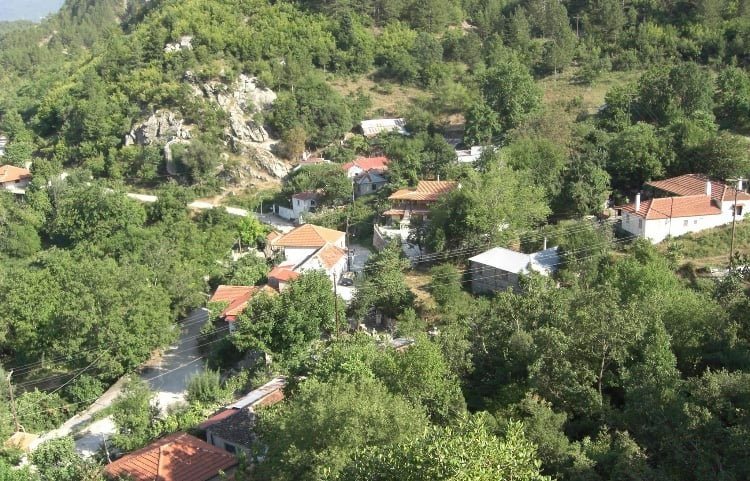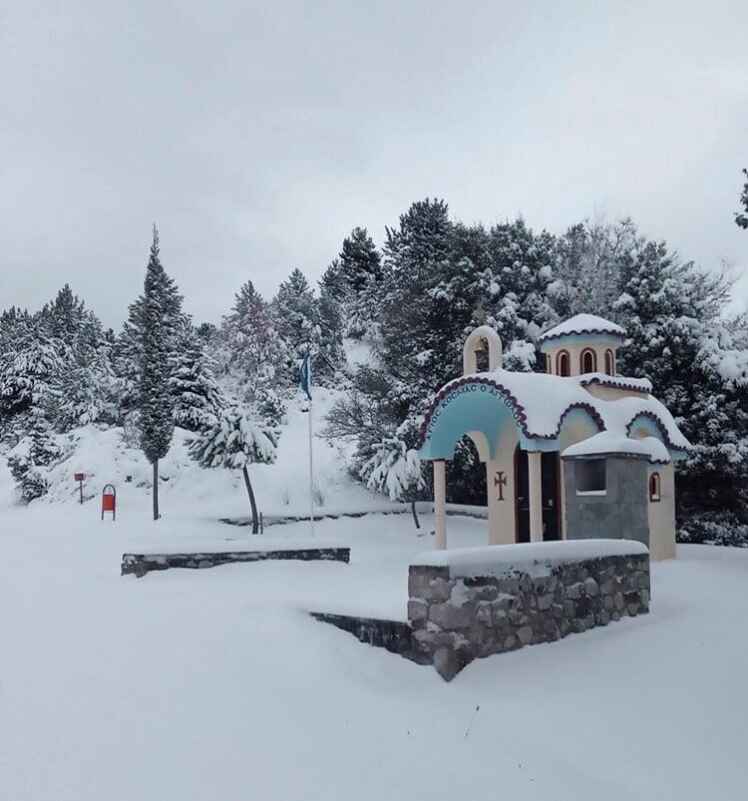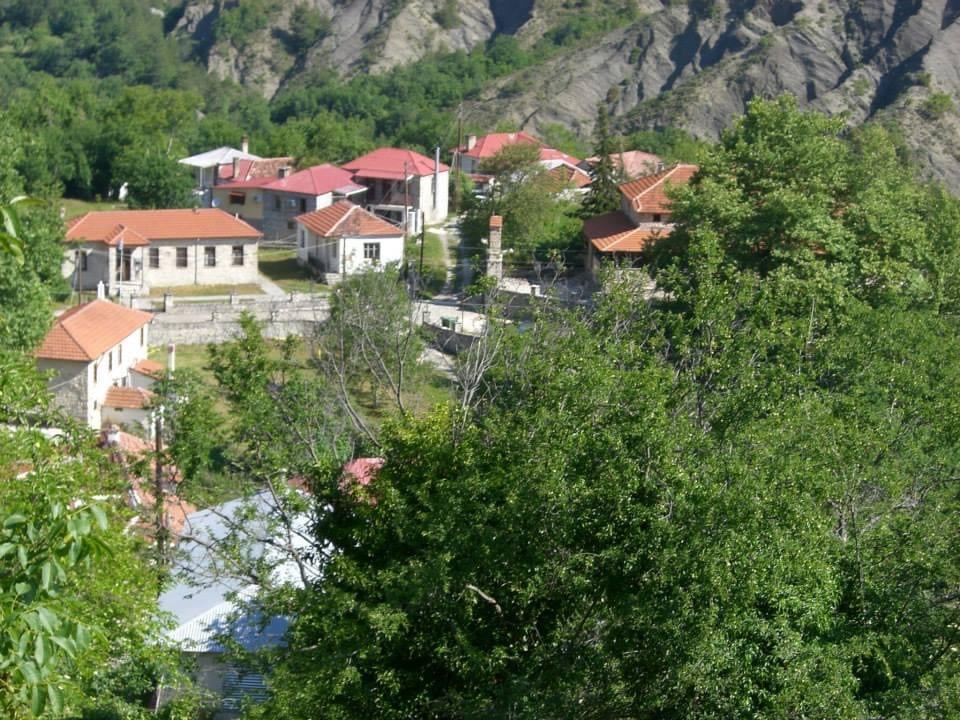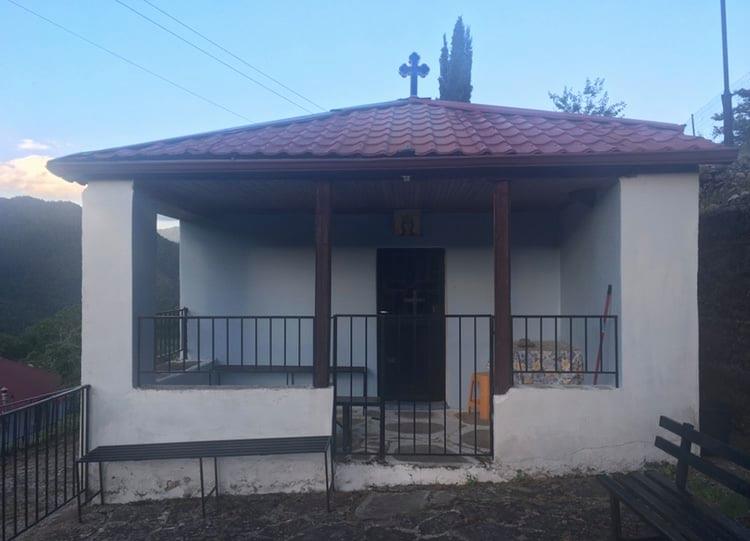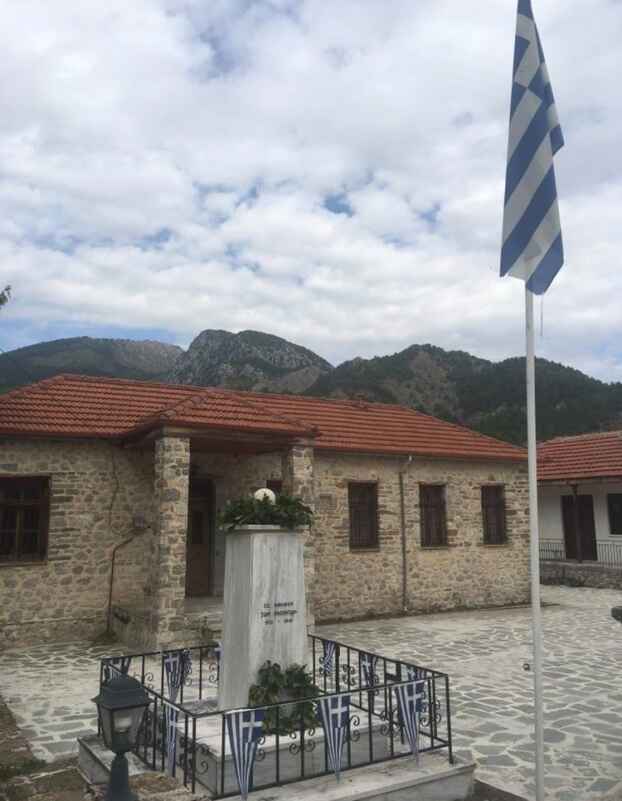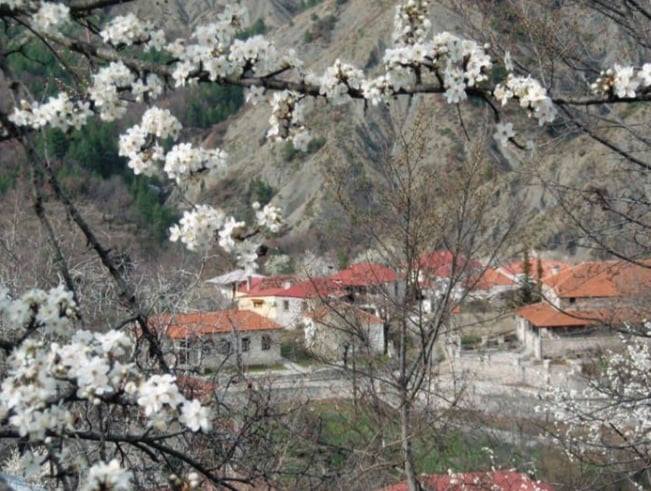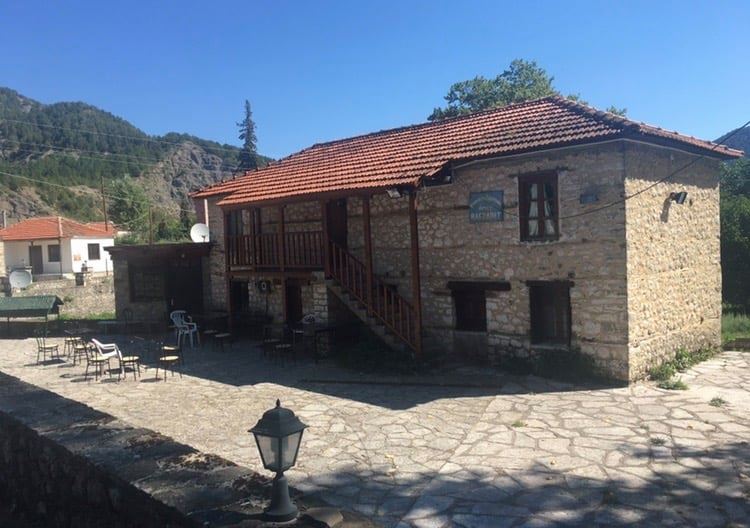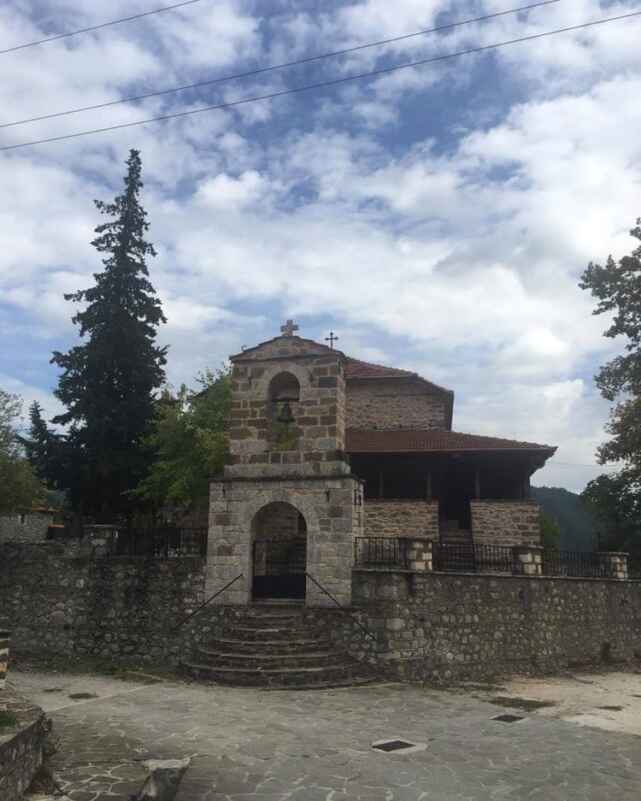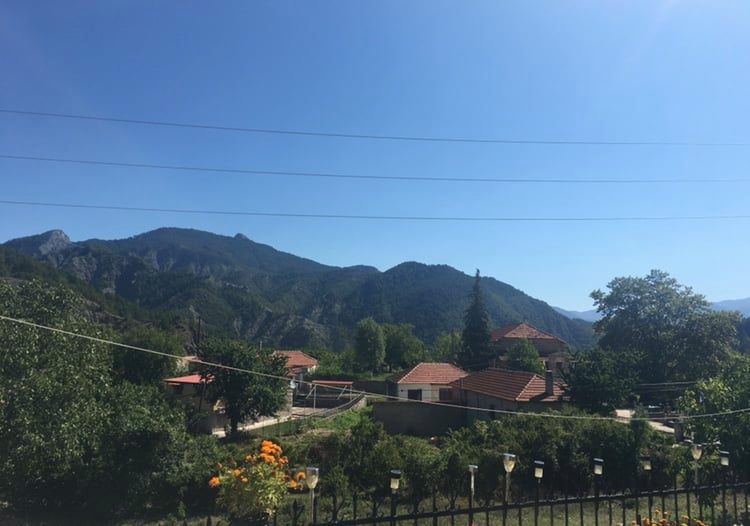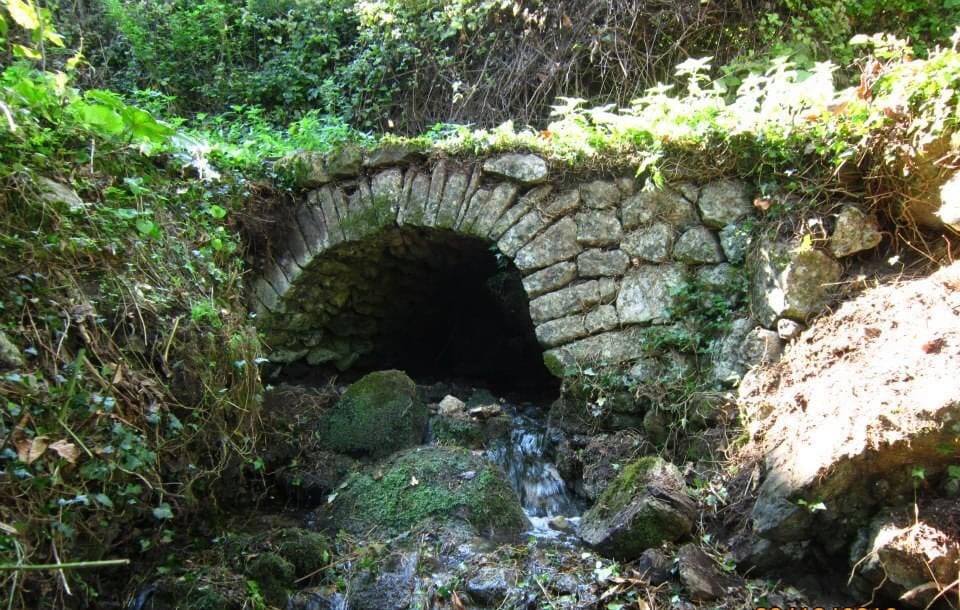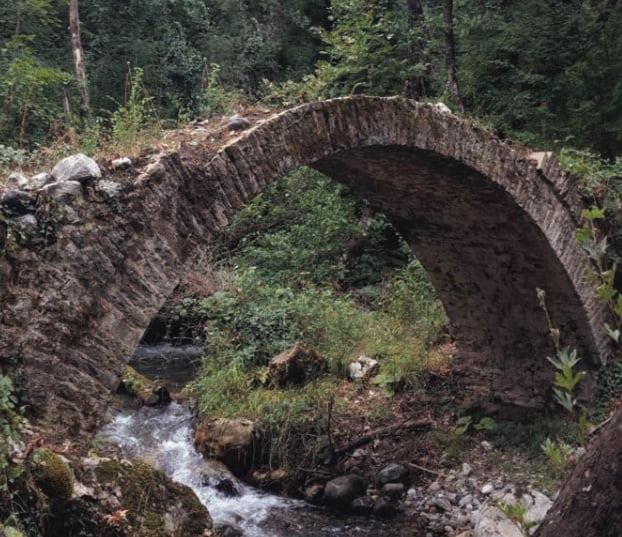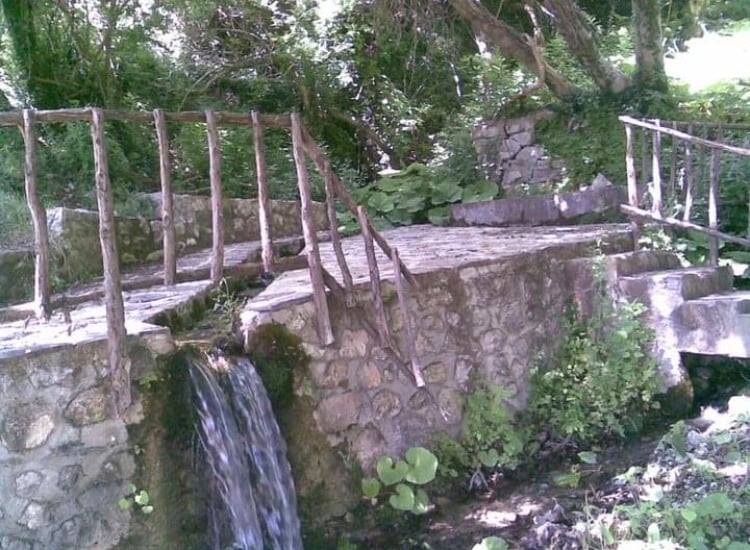The village of Agia Varvara is built on a beautiful green slope (north-east) of the Goritsa hill, 22 km away from Konitsa and at an altitude of 720 meters.
Agia Varvara belongs to the Municipality of Konitsa which is part of the regional unit of the prefecture of Ioannina that is located in the region of Epirus. In the 17th century the village was located at the places of Tserovo and Katakolo. The old name of the village was Plavali.
Today, the villagers are engaged in agriculture, animal husbandry and construction work.
The same tradition that existed in all of the Mastorochoria villages, existed in Agia Varvara as well. That is, the men of the village traveled to the surrounding areas and also quite far from their own place (for example, in Romania and America) where they worked mainly as stone craftsmen. Their admirable works adorn various places even to this day.
In the village’s square the visitor will have the opportunity to see: the stone-built imperial church of Agios Nikolaos which was built in 1770, the old school and the monument for the heroes who fought and fell for their country during the war of 1940. In addition, besides the historic church of the village dedicated to Agios Nikolaos, the visitor will find right next to the chapel of Agios Georgios of Ioannina, the church of Agia Varvara (in the upper neighbourhood of the village). And also several chapels which are scattered around the village, such as Agia Marina, Panagia, Agios Minas, Agios Charalambos, Profitis Ilias, Agios Ioannis, Agios Athanasios and the church in honor of Agios Kosmas Etolos.
Dentroklklisia is a religious monument and tourist attraction of the village and the wider area as well. It is located just a few meters away from the crossroads towards the village. It is a small church inside a tree which was built in honor of Agios Paisios, who used to pass through the area during his youth in order to carry out carpentry work and repairs in local houses. In Greece, there are very few similar churches like this (places of worship in a tree) and they arouse the interest of Greeks and foreign visitors.
The stone single-arched bridges are a reference point of the village and they are a typical example of the art of stone craftsmen. Also, at a lower point of the village, you can observe Sarandaporos river as it rolls and disappears, after a short journey, in Albania.
One of the customs that survives to this day and attracts many people to the village, is the custom of the cauldron (a large cooking pot). Traditionally, it is revived on the first Sunday after the 15th of August, with a two-day party in the village square accompanied by traditional music. It is a celebration that is worth attending! In the village square you will be interested in the cafe, where you can taste local delicacies and enjoy “tsipouro” (a local alcoholic drink) in the shade of the trees, while listening to the running water that springs from grooves and stone fountains.

